|
The Ring Necked Pheasant, Phasianus colchicus, introduced to South Dakota in the 19th century, is now the official State Bird. Millions are found throughout the central and eastern parts of the state. The Big Sioux basin produces thousands of these beautiful birds yearly. This photo was taken along the edge of the river's west bank, along a fence in eastern Sioux Falls. For more info on this prolific Chinese import, go to:

|
| 4 Tree Hugger |
The White Breasted Nuthatch (Sitta carolinensis), is one of the most common birds at feeders. This male was photographed on the west side of the Big Sioux. For more information on this friendly little tree hugger, go to: http://birds.cornell.edu/BOW/WBNH/
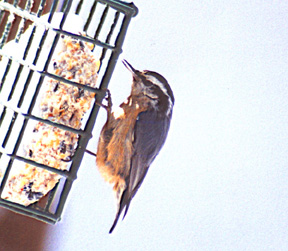
|
| 5 Cold Meal |
The Red Breasted Nuthatch (Sitta canadensis), is a winter resident of the Big Sioux. It often comes to feeders to feed on sunflower seeds, safflower seeds, and suet blocks, as in this photo. The river is 900 feet to the east of the feeder. For more information on the Red Breasted Nuthatch, go to:

|
| 6 Green Heron |
The Green Heron (Butorides virescens), is a common resident of the Big Sioux. It often nests in the tall trees surrounding the river. For more info on the Green Heron, go to: http://birds.cornell.edu/BOW/RBNU/
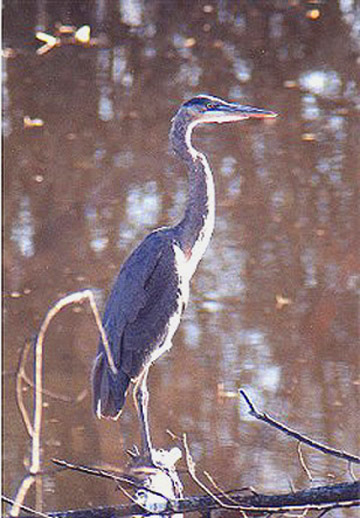
|
| 7 Great Blue Heron |
The Great Blue Heron, (Ardea herodias), its wingspan of over 6 feet, is a beautiful giant among Big Sioux River inhabitants. It can be seen along the river plucking frogs and fish from the shallows. Great Blues have a long life expectancy, and are often found in the same general area for many years. For more information, go to :http://www.mbr-pwrc.usgs.gov/id/framlst/i1940id.html
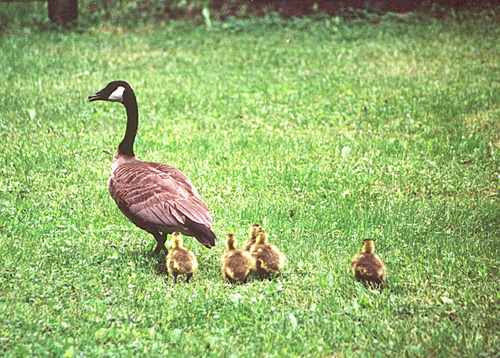
|
| 8a Mom and Kids |

|
| 8b Sleeping Geese |
Pictures 8a and 8b are of the Giant Canada Goose (Branta canadensis maxima). Photo seven shows an adult with gooslings, and photo eight shows two Canadas resting on the ice in late winter. These intelligent, beautiful birds spend both winter and summer on the Big Sioux river. The goose family was photographed near their nest on Spirit Island, in eastern Sioux Falls, and the sleeping birds near the Tutill Park dam. For more info on Canada Geese, go to: http://www.npwrc.usgs.gov/resource/1998/goosnest/goosnest.htm
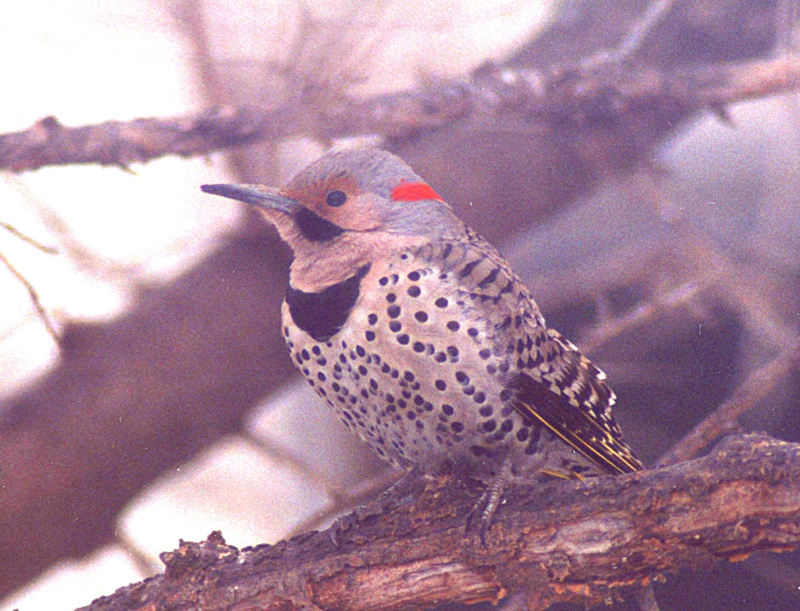
|
| 9 Male Yellow Shafted Flicker |
The Yellow Shafted Flicker, (Colaptes auratus), is a large woodpecker that is often seen on the ground looking for ants. He visits feeders year around. This photo was taken west of the Big Sioux in March, 2002. For more info on this beautiful bird, go to:http://www.birdsofna.org/excerpts/flicker.html
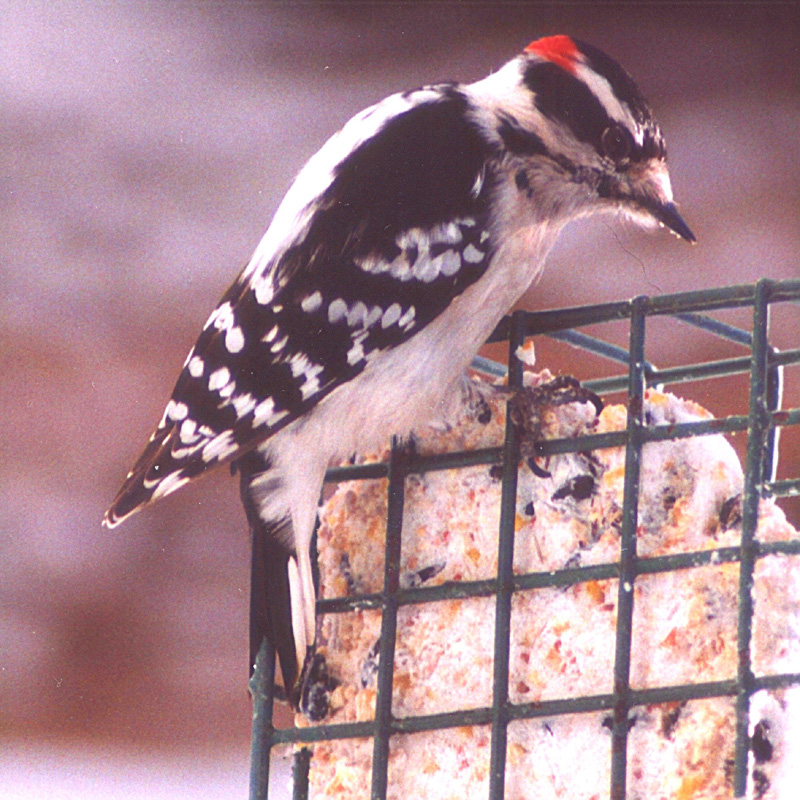
|
| 10 Male Downy Woodpecker |
The Downy Woodpecker (Picoides pubescens), may be the most common woodpecker year around in South Dakota. He is about 6 inches long, with a red nape. The females lack the red spot. The Hairy Woodpecker is 3-4 inches longer than the Downy. The best way to tell them apart is the length of the beak, which on the Hairy is almost as long as his head, while the Downy's is half the length of his head. A suet block (as in the picture) will draw this beautiful bird to your yard, but he may start drilling holes in your house. The photo was taken just a few city blocks west of the river in Sioux Falls.
For more info on this little woodpecker, go to:http://birds.cornell.edu/pfw/AboutBirdsandFeeding/woodpeckerIDtable.htm
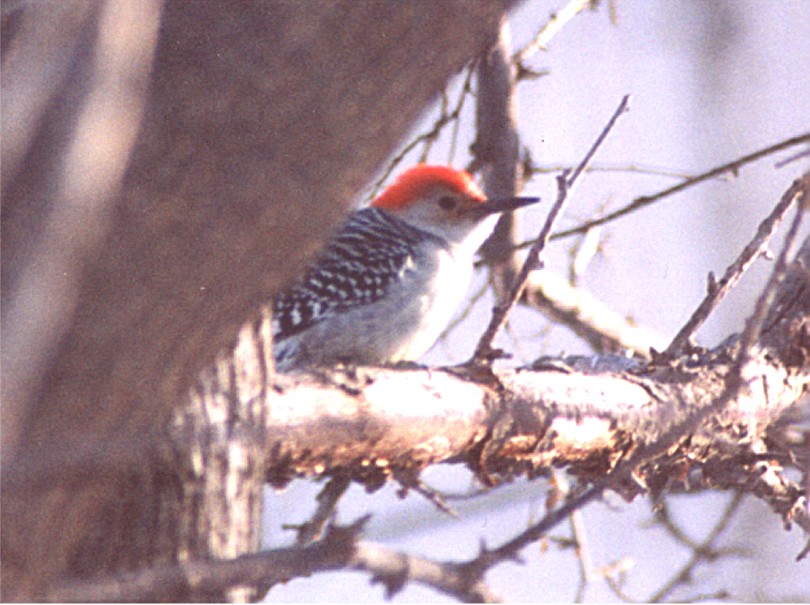
|
| 12 Male Red-Bellied Woodpecker |
The Red-bellied Woodpecker, Melanerpes carolinus, is often a year-round inhabitant of the Big Sioux River valley. This male was seen in March, 2002, along the river in Sioux Falls. Its drumming is in short bursts, about 1 second long. For more information on this beautiful bird go to:http://www.birdsource.org/gbbc/birdid/rewo/
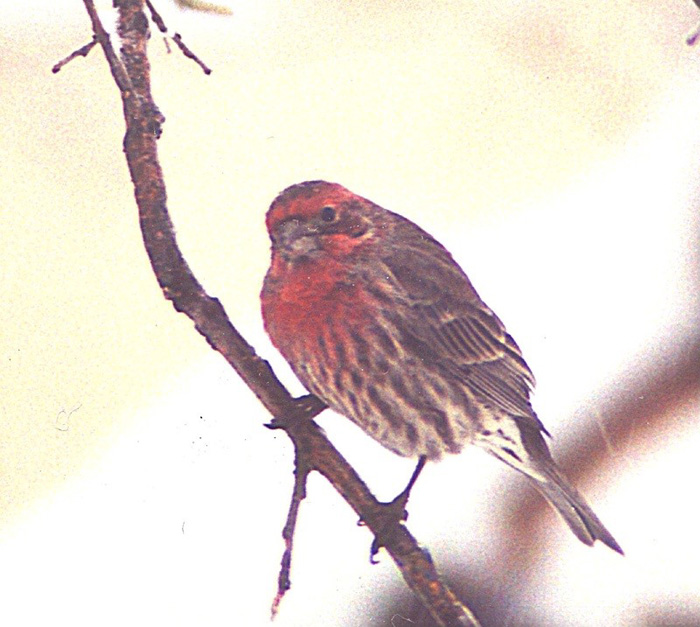
|
| 13 Male House Finch |
The House Finch, Carpodacus mexicanus, was a Western U.S. bird that was sold, illegally, in New York as cage pets, named "Hollywood Finches" to sidestep the laws. When discovered, the dealers released the birds. That small base population is one of the reasons diseases, such as avian conjunctivitis, affect so much of the population. For more information on this disease, go to:http://birds.cornell.edu/hofi/
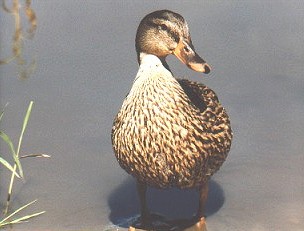
|
| 14a Mallard duck |
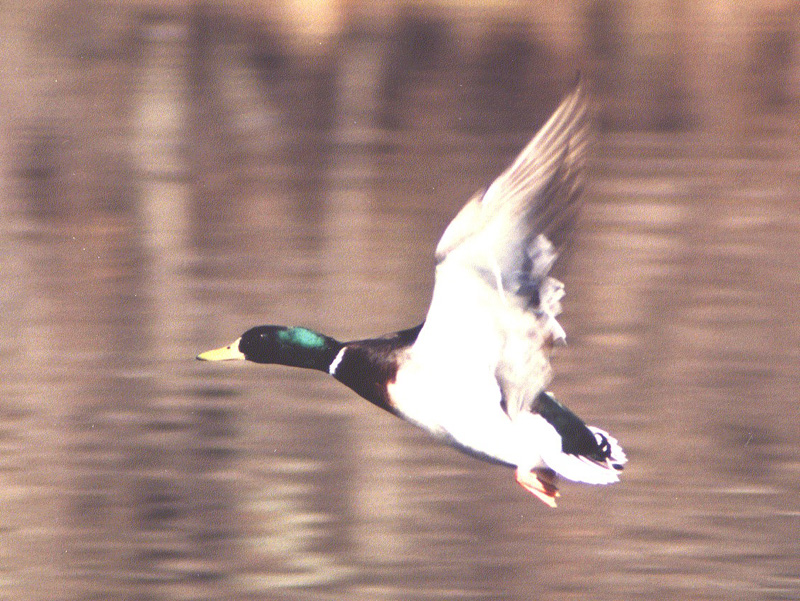
|
| 14b Mallard Flight |
Probably the most widespread duck in the U.S., the Mallard ( Anas platyrhynchos), is found year around on the Big Sioux. The flying drake is seen over the brownish green water of the river, while the duck is in a slow flowing oxbow where cattails and duckgrass can grow. For more info on the popular Mallard in South Dakota go to : http://www.npwrc.usgs.gov/resource/distr/birds/sdatlas/species/13200.htm
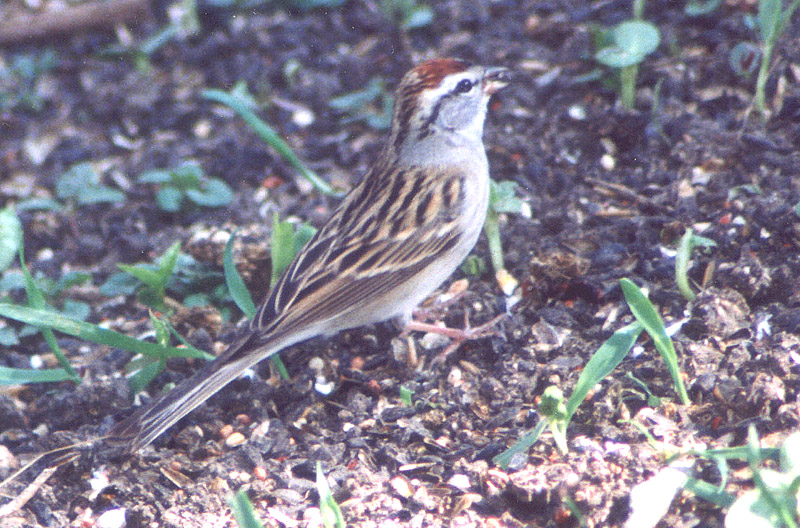
|
| 16 Chipping Sparrow |
The tiny Chipping Sparrow (Spizella passerina), is a sure sign of Spring. His bright rufus (reddish brown) crown is helpful in identification, along with the black eyeline and black bill. For more information on him, go to:
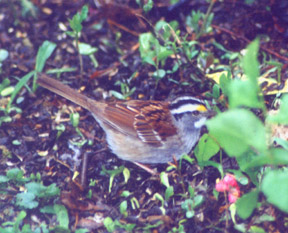
|
| 17 White Throated Sparrow |
The White Throated Sparrow (Zonotrichia albicollis), is a regular visitor to the Big Sioux Basin in the spring and Fall on its way to the northern forests of Canada. His white throat and yellow spot in front of they eye are good identifiers. He is a ground feeder at back-yard feeders, so place seed on the surface for him. For more info on this colorful bird, go to:http://www.mbr-pwrc.usgs.gov/id/framlst/i5580id.html
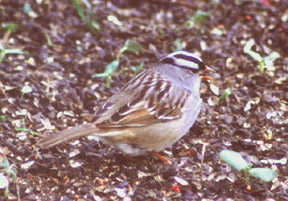
|
| 18 White Crowned Sparrow |
The White Crowned Sparrow, (Zonotrichia leucophrys),is a fall and spring migrant in the Big Sioux Basin. He breeds in northern Canada and Alaska, and winters in the southern U.S. and Mexico. For more information, read Birds if South Dakota, by Tallman, et al. 2002, or go to http://www.mbr-pwrc.usgs.gov/id/framlst/i5540id.html
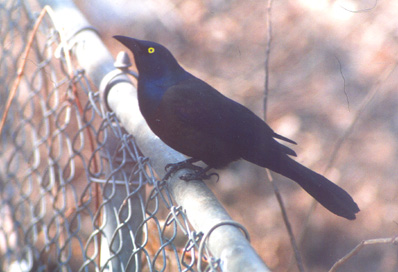
|
| 19 common grackle |
The Common Grackle, (Quiscalus quiscula),is a large black bird with a very un-musical song and big yellow eyes. They are common and often pests in agricultural areas. A purplish head and neck and long tail are characteristics. This gregarious bird has adapted well to urban sprawl. For more information, go to: http://www.mbr-pwrc.usgs.gov/id/framlst/i5110id.html
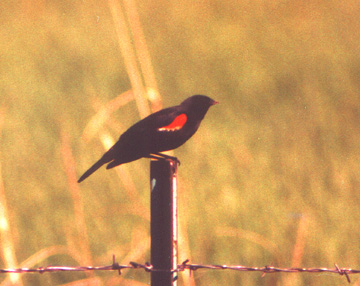
|
| 20 Red-Winged Blackbird |
The Red-winged Blackbird, (Agelaius phoeniceus), is a common sight along the river sitting on cattails. His call, to many people, is the trademark of wetlands.
The female looks like a large house finch in color. It is often a victim of pesticides, and is targeted by mass killing advocates in agricultural areas. For more information on this, go to: http://www.abcbirds.org/pesticides/DRC1339.htm
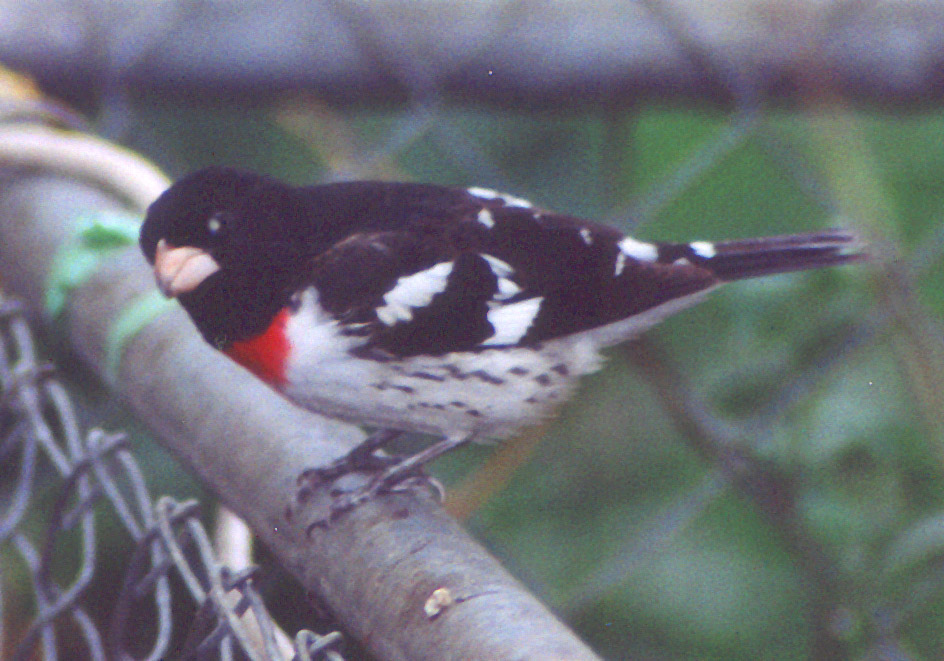
|
| 21 Rose- Breasted Grosbeak |
The Rose-Breasted Grosbeak ( Pheucticus ludovicianus), is a beautiful songbird with a rich melodious call somewhat like a Robin's. It is about eight inches long with a wingspan of 12-13 inches. For more information on this colorful bird, see your Birds of South Dakota Book, or go to: http://www.mbr-pwrc.usgs.gov/id/framlst/i5950id.html
|

